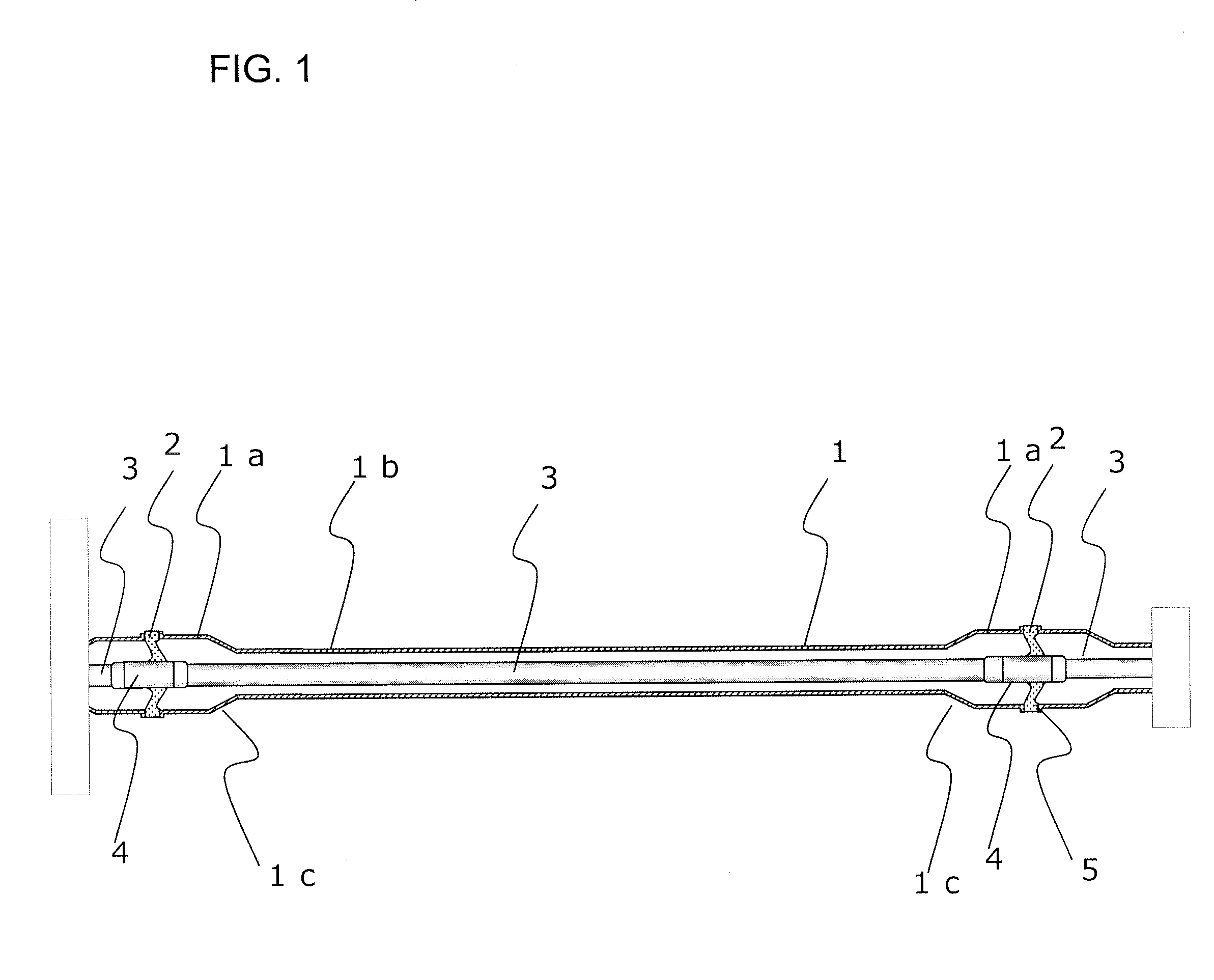Gas Insulated Bus and Particle Removal Method for Gas Insulated Bus
a gas insulated bus and particle removal technology, which is applied in the direction of insulated conductors, rigid-tube cables, cables, etc., can solve the problems of increasing the temperature of the conduction, the reduction of the size of the gas insulated bus according to the reference 1, and the inability to take into account the suppression of an increase in the temperature of the insulating spacer part, so as to reduce the operation time of conditioned particles and increase the traveling speed of particles , the effect of reducing
- Summary
- Abstract
- Description
- Claims
- Application Information
AI Technical Summary
Benefits of technology
Problems solved by technology
Method used
Image
Examples
embodiment 1
[0034]The present invention is applicable to gas insulated lines without any change. However, the present invention will be described based on a cross-sectional view of an embodiment of a gas insulated bus shown in FIG. 1. As shown in FIG. 1, the gas insulated bus is compactly configured to have a high-voltage conductor 3 supported, via insulating spacers 2 serving as an insulator, in a cylindrical metal container 1 in which a high-pressure SF6 gas is contained. Each of the insulating spacers 2 is formed of an epoxy resin, which has a high dielectric strength, and is shaped like a cone. A connection conductor 4 to which the high-voltage conductor 3 is connected is provided so as to penetrate a center of the insulating spacer 2. Furthermore, in use, the metal container 1 is grounded, though this is not shown in the drawings.
[0035]In the illustrated example, flanges 5 are provided at the respective opposite ends of the cylindrical metal container 1. The flanges 5 provided at the ends ...
embodiment 2
[0046]FIG. 4 shows a configuration of a device for conditioning for a particle according to an embodiment which is preferable for removing a particle by carrying out conditioning for a particle on the gas insulated bus shown in the embodiment in FIG. 1. FIG. 4(a) is a plan view of the device, and FIG. 4(b) is a cross-sectional view of the device as seen from a side of the device. FIG. 4 shows the device that simultaneously carries out conditioning for a particle on a plurality of (in the illustrated example, four) gas insulated buses 10. The present embodiment differs from the conditioning for a particle described with reference to FIGS. 1 to 3 in that as shown in FIG. 4(b), the opposite ends of the gas insulated bus 10 are installed on cradles 11a and 11b, which are different in height so as to incline the entire gas insulated bus for the conditioning for a particle.
[0047]That is, the conditioning for a particle described with reference to FIGS. 1 to 3 assumes that the gas insulate...
embodiment 3
[0050]In the embodiment in FIG. 1, the example is shown in which the cone-shaped insulating spacer is used at each of the opposite ends of the gas insulated bus. However, the present invention is not limited to this. The gas insulated bus may be configured using insulating spacers 15 one or both of which are shaped like a post. FIGS. 5(a) to 5(c) show gas insulated buses configured using such insulating spacers in various forms. The conical insulating spacer 2 has not only a function to support the high-voltage conductor 3 but also a function to keep the inside of the adjacent metal container 1 gas tight. In contrast, the post-shaped insulating spacer 15 has the function to support the high-voltage conductor 3 but not the function to keep the inside of the adjacent metal container 1 gas tight. Gas insulated buses are often coupled together for power transmission over a very long distance, and thus various shapes and arrangements of insulating spacers are used. If the gas insulated b...
PUM
 Login to View More
Login to View More Abstract
Description
Claims
Application Information
 Login to View More
Login to View More - R&D
- Intellectual Property
- Life Sciences
- Materials
- Tech Scout
- Unparalleled Data Quality
- Higher Quality Content
- 60% Fewer Hallucinations
Browse by: Latest US Patents, China's latest patents, Technical Efficacy Thesaurus, Application Domain, Technology Topic, Popular Technical Reports.
© 2025 PatSnap. All rights reserved.Legal|Privacy policy|Modern Slavery Act Transparency Statement|Sitemap|About US| Contact US: help@patsnap.com



